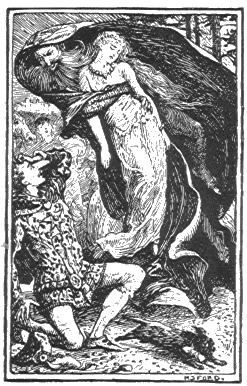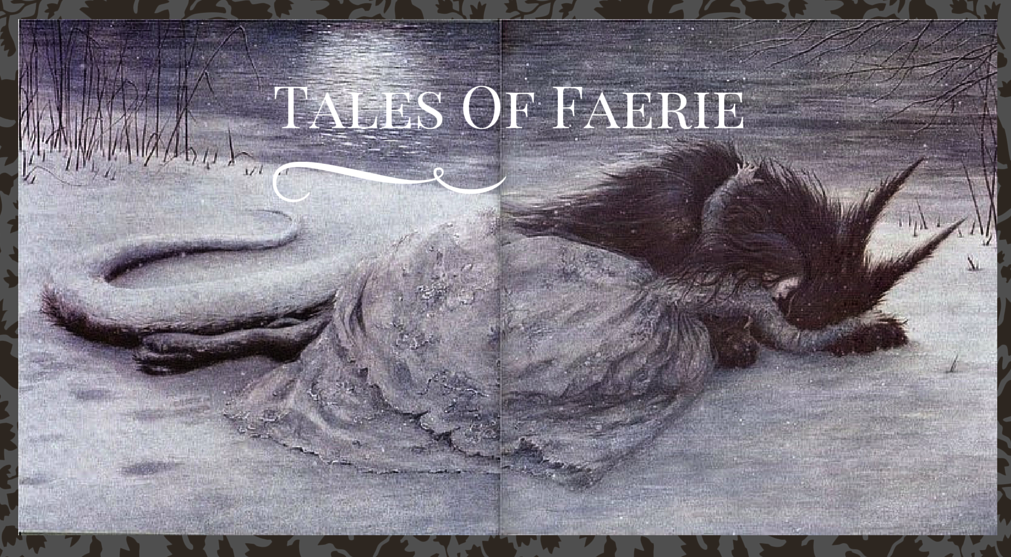
Madame LePrince de Beaument (of Beauty and the Beast fame) has another tale called Le Prince Desir et la Princess Mignonne, in which the Prince is cursed to have a huge nose until he realizes that his nose is unusual. Andrew Lang simplified the tale for his Blue Fairy Book, renaming it Prince Hyacinth, and it can be read online here. (Image from Blue Fairy Book, illustrated by H. G. Ford and G. P. Jacomb Hood).
His whole life, the Prince is surrounded by people and pictures of people with long noses. His nurses and teachers tell him that all the great historical figures had long noses, that a long nose is a sign of beauty, and that a short nose is a horrible thing to have. He falls in love with a princess' portrait despite her short nose, and it's not until he meets a fairy in disguise on his way to save his Princess and tries to kiss the fairy's hand that he realizes how inconvenient his nose really is.
I find this tale very intriguing. Today many people (myself included) believe in the power of embracing your natural, healthy body. While it may seem that to say every woman is beautiful is simply untrue, or that we must at least concede that some women are surely more beautiful than others, I truly believe that there are different forms of beauty and it's up to the viewer to learn to see it, rather than putting all the pressure on girls to conform to our rather narrow cultural standards of what is beautiful.
Yet in this tale, the Prince's salvation isn't embracing his unique nose-because for most of his life he is truly proud of his nose-but the moral is supposedly that pride can blind us to our faults. Which may be true of character, but is a long nose a fault? But the Prince is easily convinced that long noses are beautiful. If long noses were the majority, would we not all also be swayed? Cultures through time and around the world have considered things beautiful that modern Americans don't:

Full, round figures (painting by Titian)

Black teeth

Filed teeth
Beaument's story brings up a theme that I love to explore in reading and writing versions of Beauty and the Beast: not only Beauty verses ugliness, but how we perceive each. Tanith Lee explores this expertly in her version, which I will post about very soon. I've come up with a concept on my own (that was probably sunconsciously influenced by Lee) but have never been able to successfully turn it into a story, in which a girl like any of us inhabits a world of hairy beasts, in which long, thick fur is the sign of beauty. We never know if this girl would have been considered beautiful to us or not, because her hairlessness sets her apart as being the beast of that culture. So though Beauty and the Beast don't physically change from our story, their roles flip because of their beauty standards.


No comments:
Post a Comment